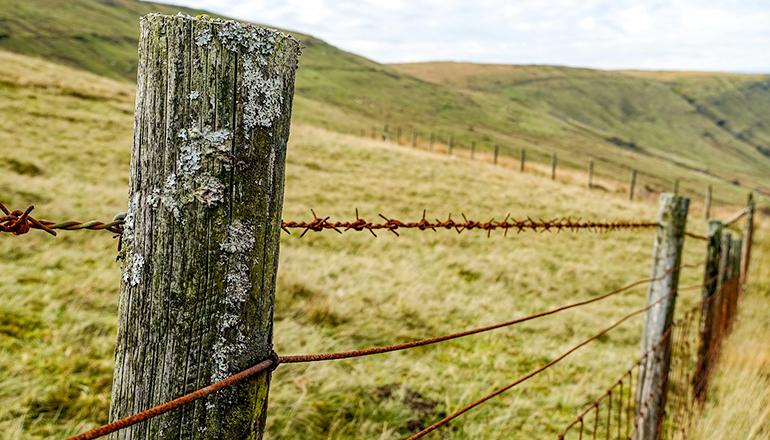When people arrived in the American Prairie in the late 1800s, they faced many challenges in their attempt to establish a new life. One of the most pressing issues was communication, as the vast stretches of land made traditional methods of connecting with others, such as mail, slow and unreliable. However, a surprisingly innovative solution was found: using barbed wire as telephone lines.
Barbed wire, which was invented in 1874 by Joseph Glidden, was initially used to fence vast amounts of land. The sharp barbs, which deterred animals from crossing the fence, could also be used to carry electrical currents, making it a suitable option for transmitting telegraph signals. In the 1880s, this technology was adapted for telephone communication, allowing homesteaders to connect with each other and the rest of the world like never before.
The process of turning barbed wire into telephone lines was relatively simple. Typically, a smooth wire was strung from a telephone in a house or barn to a barbed wire fence. From there, it hooked into the top strand of barbed wire (most fences had at least three strands) and the telephone signal would follow the length of the wire to a second telephone that was connected to the barbed wire down the line. Sometimes as many as 20 or more telephones at various rural homes were connected to a single barbed-wire system. For those without a barbed wire fence, a telephone device itself would often be located in a central location, such as a local store or post office.
While this solution was not without its challenges, it proved to be highly effective for the time. Barbed wire was readily available and relatively inexpensive, making it an accessible option for many homesteaders. It was also relatively easy to install and maintain, which was crucial given the remote locations and harsh weather conditions of the prairie.
However, the use of barbed wire as telephone lines did have its limitations. The quality of the communication was often poor, and long-distance calls were difficult to make. The lines were also vulnerable to damage from weather or animals, which could cause disruptions to communication.
Despite these challenges, the use of barbed wire as telephone lines was a remarkable achievement that allowed homesteaders to stay connected with each other and the outside world. It revolutionized the way communication was conducted in the American Prairie and paved the way for future technological advancements that we continue to enjoy today.
(Photo by Zosia Korcz on Unsplash)


